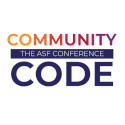Configuring the Netty RuntimeOverviewThis section is for configuring the Netty runtime used for the CXF standalone model. The Netty runtime is used by HTTP servers and HTTP clients using a decoupled endpoint. The Netty runtime's thread pool, connector and timeouts can be configured. You can also set a number of the security settings for an HTTP service provider through the Netty runtime. NamespaceThe elements used to configure the Netty runtime are defined in the namespace <beans ...
xmlns:httpn="http://cxf.apache.org/transports/http-netty-server/configuration
...
xsi:schemaLocation="...
http://cxf.apache.org/transports/http-netty-server/configuration
http://cxf.apache.org/schemas/configuration/http-netty-server.xsd
...>
The |
| Element | Description |
|---|---|
httpn:engine | Specifies the configuration for a particular Netty runtime instance. |
httpn:identifiedTLSServerParameters | Specifies a reusable set of properties for securing an HTTP server. It has a single attribute, |
httpn:identifiedThreadingParameters | Specifies a reusable set of properties for controlling a Netty instance's thread pool. It has a single attribute, |
The engine element
The httpn:engine element is used to configure specific instances of the Netty runtime. It has a single attribute, port, that specifies the number of the port being managed by the Netty instance.
You can specify a value of 0 for the port attribute. Any threading properties specified in an httpn:engine element with its port attribute set to 0 are used as the configuration for all Netty listeners that are not explicitly configured.
Each httpn:engine element can have two children: one for configuring security properties and one for configuring the Netty instance's thread pool. For each type of configuration you can either directly provide the configuration information or provide a reference to a set of configuration properties defined in the parent httpn:engine-factory element.
The child elements used to provide the configuration properties are described below.
| Element | Description |
|---|---|
httpn:tlsServerParameters | Specifies a set of properties for configuring the security used for the specific Netty instance. See the TLS Configuration page for more information. |
httpn:tlsServerParametersRef | Refers to a set of security properties defined by a |
httpn:threadingParameters | Specifies the size of the thread pool used by the specific Netty instance. |
httpn:threadingParametersRef | Refers to a set of properties defined by a |
httpn:sessionSupport | If the value is true , the Netty Engine will set up a session manager for the Netty server engine to maintain the sessions. The default value of it is false. |
httpn:reuseAddress | The the value is true, the Netty Engine connector's socket will enable the SO_REUSEADDR flage. The default value of it is true. |
Configuring the thread pool
You can configure the size of a Netty instance's thread pool by either:
- Specifying the size of thread pool using a
identifiedThreadingParameterselement in theengine-factoryelement. You then refer to the element using athreadingParametersRefelement. Specify the size of the of thread pool directly using a
threadingParameterselement.
ThethreadingParametershas one attribute to specify the size of a thread pool. The attribute is described below.The
httpn:identifiedThreadingParameterselement has a single childthreadingParameterselement
| Attribute | Description |
|---|---|
threadPoolSize | Specifies the number of threads available to the Netty instance for processing requests. |
HTTP/2 support
If HttpServerEngineSupport#ENABLE_HTTP2 bus property is set, Netty engine will enable the HTTP/2 support as well: HTTP/2 over cleartext (h2c) if TLS is not configured, regular HTTP/2 otherwise. It requires additional dependencies to be bundled by the application.
<dependency>
<groupId>io.netty</groupId>
<artifactId>netty-codec-http2</artifactId>
<version>${netty.version}</version>
</dependency>
Please be aware that if you configure HTTP/2 + TLS, CXF right now only supports JDK SSL provider.
Example
The example below shows a configuration fragment that configures a Netty instance on port number 9001.
<beans xmlns="http://www.springframework.org/schema/beans"
xmlns:xsi="http://www.w3.org/2001/XMLSchema-instance"
xmlns:sec="http://cxf.apache.org/configuration/security"
xmlns:http="http://cxf.apache.org/transports/http/configuration"
xmlns:httpn="http://cxf.apache.org/transports/http-netty-server/configuration"
xsi:schemaLocation="http://cxf.apache.org/configuration/security
http://cxf.apache.org/schemas/configuration/security.xsd
http://cxf.apache.org/transports/http/configuration
http://cxf.apache.org/schemas/configuration/http-conf.xsd
http://cxf.apache.org/transports/http-netty-server/configuration
http://cxf.apache.org/schemas/configuration/http-netty-server.xsd
http://www.springframework.org/schema/beans
http://www.springframework.org/schema/beans/spring-beans.xsd">
<httpn:engine-factory bus="cxf">
<httpn:engine port="9001">
<httpn:tlsServerParameters>
<sec:keyManagers keyPassword="skpass">
<sec:keyStore file="src/main/config/serviceKeystore.jks" password="sspass" type="JKS"/>
</sec:keyManagers>
<sec:trustManagers>
<sec:keyStore file="src/main/config/serviceKeystore.jks" password="sspass" type="JKS"/>
</sec:trustManagers>
</httpn:tlsServerParameters>
</httpn:engine>
</httpn:engine-factory>
</beans>

